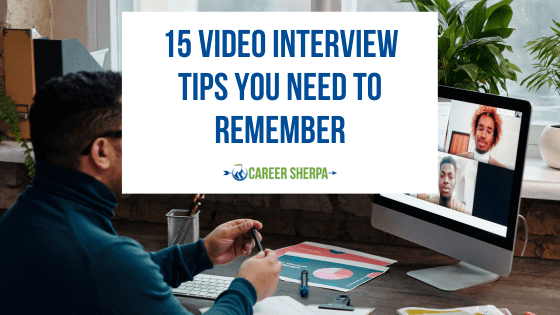
Recruiters need to find talent for their organization year round. However, they may struggle to fill positions during the summer months. How can you beat the heat and keep your recruiting efforts sizzling this summer?
In this article, members of Duffy Group will reveal the secrets to avoiding the dreaded recruiting summer slump. Read on to discover innovative strategies, practical tips, and creative techniques to attract top talent even during the hottest months.
Kristin Pozen
Don’t let the summer heat get you hot under the collar. Summer recruiting can be successful when you start with a good strategy, organization, and communication foundation. Spend enough time with the hiring manager at the beginning of the search to understand the role, timeline, budget, and potential hurdles. You do not want to miss critical information about the role and be unable to reach the hiring leader due to summer plans.
- Get access to the hiring manager’s calendar and the ability to set interviews on their calendar.
- Synch your vacation plans so everyone working on the search knows each other’s availability. This is especially important if a committee is involved in the hiring process.
- Once the interview is confirmed, send a calendar invite to the candidate to ensure it is on their schedule. Include all information such as the person they are interviewing, address, phone number, contact information in case something comes up, etc. You may want to include their resume so it is shown as an attachment for the invite.
- Set up all interviews with automatic reminders to pop up and ensure no one misses the meeting.
- Add weekly check-in calls to the hiring leader’s calendar.
- Get a commitment from the hiring leader that they will provide feedback and the next steps within 24 hours of an interview.
- Use technology to help with time management and organization. Whether it’s Outlook calendar invites with reminders or Google or Calendly, maximize the use of technology to get your candidates and hiring leaders moving on to the following interview.
Overall, if you go into summer with a positive and flexible mindset, you should be successful in filling your roles.
Kristin Pozen is a research recruitment recruiter at Duffy Group and a former HR recruiter.
Sharon Grace

We all love the summer. The kids are off from school, and it’s time to take those vacations you planned during the winter months. We all tend to be happier when the temperature rises, the sun shines daily, and our day-to-day schedules become more relaxed. What does this mean for the job market? Do companies slow down or pause hiring, and do candidates stop looking?
Historically, there can be an assumption that this is true, but it’s not. Here are things to think about as you continue hiring or looking for a new opportunity for yourself:
- Fast-paced and deadline-driven environments tend to ease, allowing opportunities for more flexibility to look for a new opportunity.
- Fewer demands in your current job can help you better prepare for an interview and give you the time to interview.
- Vacations can provide an opportunity to evaluate your current job, employer, or location. Were there changes such as leadership, culture, staffing, and requests to return to the office?
- People can be easier to reach and may have more time to communicate freely. This is an excellent time to recruit someone, get their attention, and schedule a call.
Let’s keep the hiring momentum going during the summer months! There is no need for hiring to go on vacation, and let’s work together with a strategy to recruit the candidates you have been trying to hire all year. Chances are they have more flexibility to talk to you and better understand what they seek.
Sharon Grace is a veteran search executive at Duffy Group who helps hiring leaders hire great people because of her proven track record as a strategic partner and advisor to recruit, identify and assess talent.
Colleen Neese

As the saying goes, timing is everything! This applies to making a job change as well. It’s important to remember the time of year and the potential impacts that will have on your ability to fill a critical job opening. Summertime can be an excellent time to make a career change, especially for specific industries and positions. For example, the education sector is one where it makes sense to recruit in the summer to fill the position before the school opens in the fall.
Recruiters and hiring leaders with international or European clients must remember to recruit early for August openings since many European companies shut down during the summer.
Lastly, for those candidates with school-aged children who are considering relocation, making a job change during the summer is the ideal time to consider relocation so that their kids can begin the new school year in their new location.
Colleen Neese is a practice leader at Duffy Group. She specializes in recruiting executives in non-profit and healthcare.
Kathleen Duffy

When I grew up, my family relocated six times before our final destination of Phoenix, Arizona, which is how I ended up attending Arizona State University and starting my career here. When I was young, moving was an adventure; however, the move during my high school years could have been traumatic and a deal-breaker for the company recruiting my dad.
“Always be closing” is not only about the candidate when relocation is involved. Recruiters need to close the spouse/partner and children. You don’t want to get to the offer stage and they decline the offer because their children do not want to move. Here are a few tips to ensure your potential candidate has addressed the possible move with their children.
- Ask how their children feel about moving.
- Ask about the academic environment best suited for the kids.
- Ask how their children feel about moving a second time.
- Ask what extracurricular activities their children enjoy.
- Ask how their children feel about moving a third time and more.
When the candidate visits on site for their interview, provide a relocation packet for the children based on the information you have learned. If possible, facilitate introductions with the employees’ children so they can begin making friends.
A little extra TLC for the children goes a long way to ensure they thrive in their new home and your new employee can focus on their new role.
Kathleen Duffy is the founder, CEO, and president of Duffy Group. The company’s vision is to elevate recruitment research as an alternative to contingent and retained search. Since its founding, Duffy Group has been a remote workplace and a culture of work/life harmony.
Georgia Musgrave

Recruiters can sell the adventure of moving to a new location, but what happens when the destination is less than ideal?
Encourage candidates to look beyond the short term and focus on the long-term benefits of the move. First and foremost, using Arizona as an example, it gets HOT and could be viewed as a miserable place to move from June to August! However, it is home to some of the most breathtaking natural landscapes in the country. There is something to see and do, from the Grand Canyon to Sedona’s red rocks. Many people do not realize there are countless opportunities to explore and appreciate the beauty of the desert. Hiking, camping, and stargazing are just a few activities that can be enjoyed in this unique environment. The state is known for Southwestern cuisine, which blends traditional, Mexican, and Native American ingredients with American cooking techniques. From spicy chili peppers to prickly pear cactus fruit, endless tastes exist. Recruiters should concentrate on the positive aspects of the location so candidates see the big picture.
Despite the destination, moving to a new location is an opportunity for personal growth and self-discovery. Whether learning a new skill or pursuing a passion, there are countless ways to make the most of a move to a new location, no matter the destination. With a positive attitude and open mind, you can turn any challenge into an opportunity for growth and success.
Georgia Musgrave is the VP of Strategic Initiatives at Duffy Group. She educates leaders on the value of “passive talent” as a means of attracting the best human capital to their company.
Need help recruiting talent for your organization? Check out Duffy Group today.


































